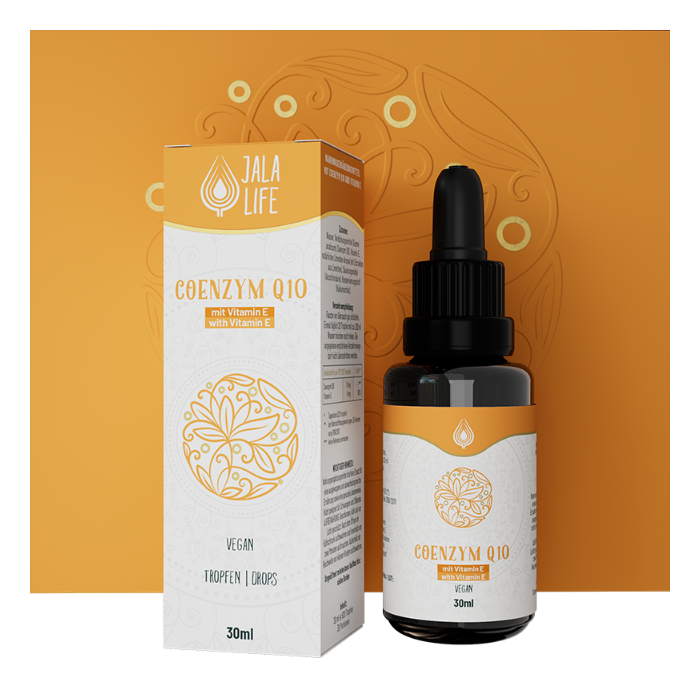Vitamin E is a fat-soluble vitamin that plays an important role in the body. It consists of a group of eight different compounds called tocopherols and tocotrienols. The most abundant and biologically active form of vitamin E is alpha-tocopherol. Vitamin E is a powerful antioxidant, which means that it helps protect cells from oxidative stress. It also plays a role in maintaining normal immune system function and in the formation of red blood cells. The main sources of vitamin E in the diet are plant foods such as nuts, seeds, vegetable oils (e.g. sunflower oil, wheat germ oil) and green leafy vegetables. It is also found in smaller amounts in some animal products such as eggs and meat.
Vitamin E and coenzyme Q10 show some synergistic effects, especially in terms of their antioxidant properties and their ability to regenerate each other. In the process of neutralizing free radicals, vitamin E gives up an electron and becomes a free radical itself. This is where coenzyme Q10 comes into play! Coenzyme Q10 can “catch” this surrendered electron and regenerate vitamin E again. This process is considered an important synergy between the two nutrients, as they support each other and enhance their antioxidant effectiveness.
This synergistic action of vitamin E and coenzyme Q10 is relevant in various aspects of health. Both nutrients can help protect against oxidative stress and potentially reduce inflammation. In addition, they play an important role in maintaining healthy cardiovascular function, normal immune function and optimal energy production in cells.



















